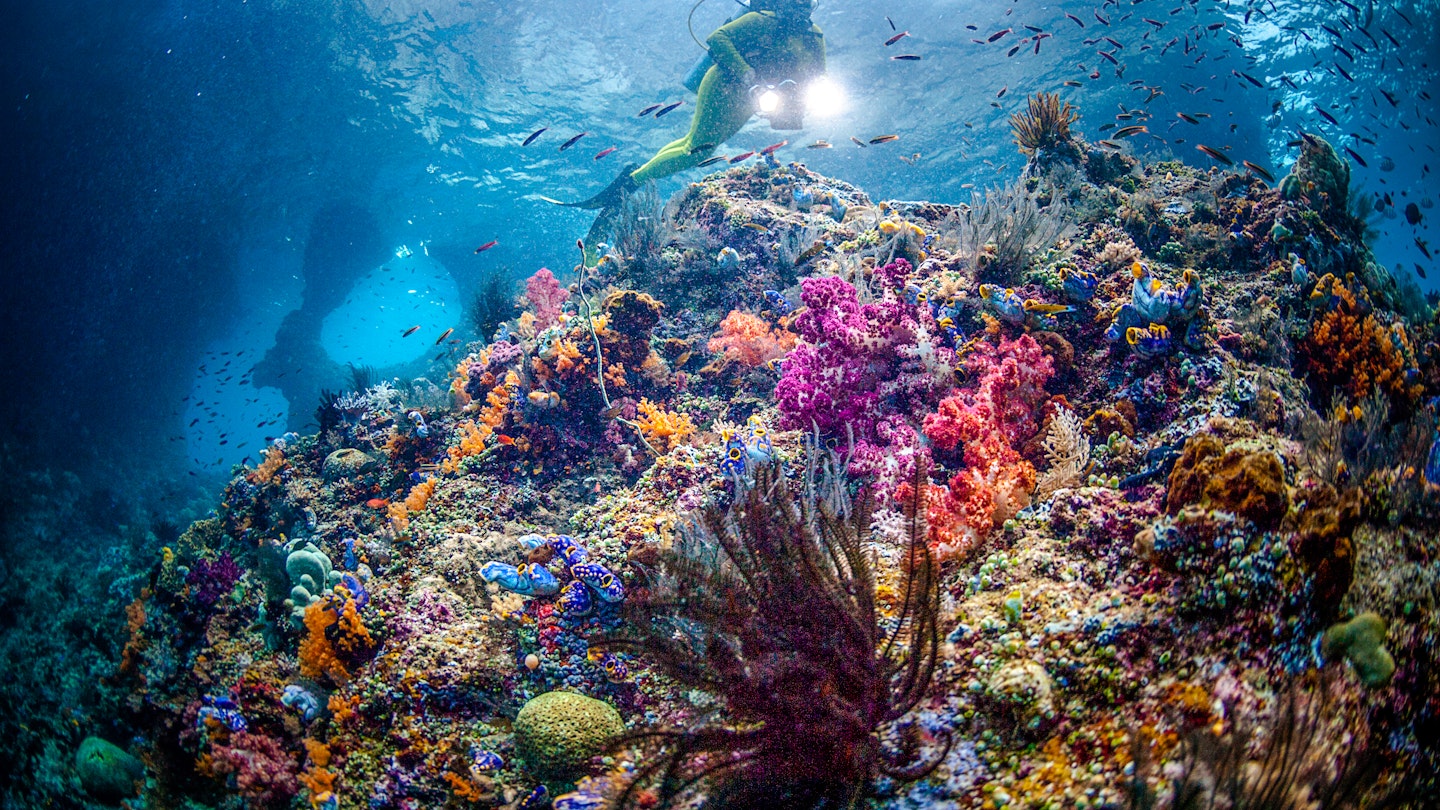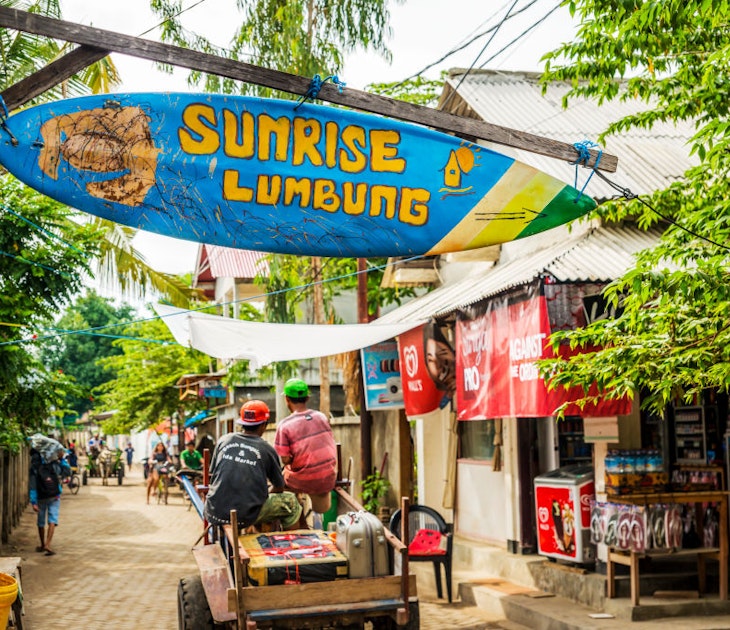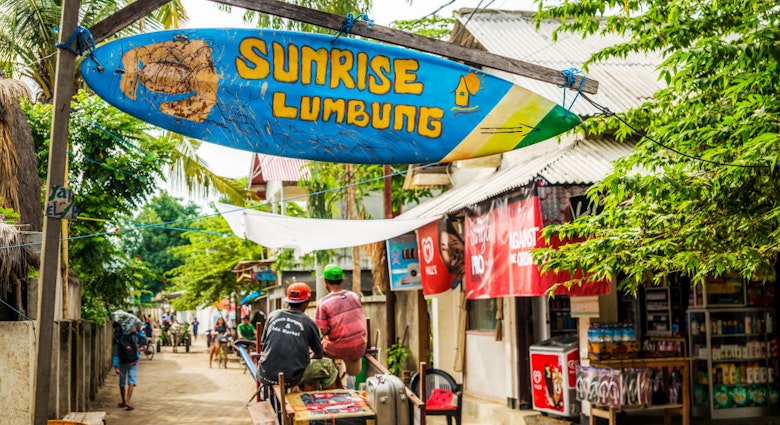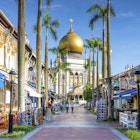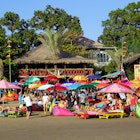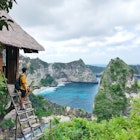Well known for its coral reefs, excellent diving, and beautiful beaches, Raja Ampat is a great alternative to better-known Indonesian islands. The best way to see these stunning (and remote) islands is by chartering a "liveaboard" dive boat, and heading out to sea for several days.
Writer and photographer Matthew Oldfield lives in Indonesia and runs a dive travel agency. Here's his suggestion for how to see the island if you have 7 to 8 days to visit.
I’m a writer and photographer based in Bali, from where I also run ZuBlu, a dive travel agency specializing in bespoke tours. I’ve dived across Indonesia, from Aceh to Cenderawasih Bay, but am most at home watching Misool’s manta rays at Magic Mountain.
Why you should visit Raja Ampat
The Raja Ampat Islands are breathtakingly unique, both above and below the waves. Over 1500 reefs and islets lie scattered among the larger islands of Batanta, Waigeo, Salawati and Misool (the “four kings” that give the destination its name in Bahasa). This area is home to the most biodiverse coral reefs on the planet, where manta rays parade past pygmy seahorses, and where wriggling wobbegongs meet walking sharks. Above the surface, sheer cliffs hide passageways and lagoons dotted with pinnacles and secret beaches. And the best way to explore this island landscape? Onboard a Bugis phinisi, a traditional ship originally designed for trading between the islands that today might be fitted for diving, adventure or simply relaxing. Whether you prefer to charter a boat with your loved ones or join a group onboard a liveaboard (a dive boat purpose-built for multi-day cruises), a voyage through Indonesia’s “Four Kings” is unlike any other.
Some advice on when to go
Raja Ampat’s seasons are markedly different from those of the rest of the country. From October to April – when much of Indonesia is in the middle of the very wet monsoon – Raja Ampat experiences its dry season, with calm seas and exceptional marine life, including manta rays. This being Indonesia, you’ll always get some rain, yet showers come short and sharp, and the clouds provide for dramatic sunsets. At the height of the southwest monsoon in July and August, windy conditions prevent liveaboards from sailing to the southern islands, including Misool.
Waigeo, Wayag, Gam and the Dampier Strait in the north can be dived year-round. To experience Raja Ampat at its best, visit early in the season, between October and December, when the seas are calm enough to head south to Misool, and when mobula rays congregate to feed on vast clouds of baitfish. If you’re looking to really get away from it all, visit during the low season, from May to September, when many of the liveaboards head west to Komodo and Raja Ampat sees far fewer visitors.
The heart of Raja Ampat
After boarding and settling into your cabin in Sorong, the gateway to Raja Ampat, you’ll sail northwest into the Dampier Strait for some exceptional diving to kick-start your exploration. This passage – between Batanta to the south, and Waigeo and Gam Islands to the north – funnels vast amounts of water from the Pacific Ocean toward the Banda Sea to the southwest, part of an extraordinary movement of water called the Indonesian Throughflow. The strong currents combined with the nutrient-rich water create the perfect conditions for the prolific growth of reefs, and the abundant marine life they support. This is why the diving here is just so good.
The best dive sites are found where the currents swirl past isolated reefs and headlands. From Blue Magic (in the middle of the strait) to nearby Sardine Reef and Cape Kri, you’ll explore vibrant reefs blanketed in schools of fish that can literally block out the sun. The sheer abundance of marine life here is simply exceptional, in terms of the quantity of both species and individuals you’ll find. In fact, Cape Kri at Mansuar Island in the middle of the strait holds the world record for the highest number of different fish species recorded by scientists on a single dive.
Catch some rays
If that weren’t enough, the Dampier Strait is also one of the best places in Indonesia to encounter manta rays. While these plankton feeders are spotted throughout Raja Ampat, the strait has earned a reputation for delivering some special encounters. At Manta Sandy and Manta Ridge, reef manta rays gather in formation to feed in the currents, and to visit what you might call cleaning stations, crewed by tiny wrasse that pick off and eat dead skin and parasites from the ray’s body. (It’s the underwater equivalent of a visit to the salon.) If you’re lucky, you can even witness “mating trains” of courting rays. At Blue Magic to the east, you’ll have the chance to spot both reef mantas and vast oceanic manta rays, including rare black individuals. These huge rays can reach 16ft (5m) from wing tip to wing tip, and bear a striking resemblance to Stealth Bombers as they cruise the depths.
While it might be hard to tear yourself away from the manta rays, you’ll need to move on – and tiny Arborek Island offers a chance to head ashore and wind down after diving. The island is a popular stopover for liveaboards, as it marks the western end of the strait. The local people have always been welcoming to visitors, particularly the kids who hang out on the jetty. But don’t miss out on the chance to grab a mask and jump in: the jetty is famous for the huge schools of fish that gather around its pilings.
North to the Pacific
Leaving the strait behind, your phinisi will head northwest for the next part of its voyage. This being Raja Ampat, there’ll be some exploration along the way, and you’ll stop off at Yangeffo Island at the western tip of Gam. Divers can explore sites such as colorful Mayhem and Citrus Ridge, while snorkelers can hit the mangroves in search of archerfish, spitting fish that target insects on branches above the water. Not far away is The Passage, a narrow, sinuous, river-like channel that separates Gam and Waigeo Islands. Time your visit with the changing tides and you can end the day drifting along with the current, admiring the jungle and watching the reef sliding by just beneath the surface.
Gam is also well known for its endemic birds of paradise, found only on a handful of islands in and around the Dampier Strait. It’s well worth waking up for a pre-dawn trek to search for these red beauties, in the hours when the males gather to display their feathers for their female counterparts. The beautiful and even surreal sight of these birds dancing up and down branches, as they flash their red, yellow and green colors and long, wire-like tail feathers makes your early start a little less painful.
Across the equator
You’ll then cruise up the coast of Waigeo toward Aljui Bay and Kawe Island. A pearl farm inside the bay makes for a fascinating stopover, during which you can watch the staff at work and learn how the pearls are propagated, as well as pick up some unique souvenirs. To the northwest lies Kawe Island, where you’ll dive Eagle Rock and Changgo (both renowned for their rich marine life), before crossing the equator at the northern tip of the island. If this is your first crossing at sea, the crew, led by “King Neptune” himself, will induct you into the mysteries of the deep – an old naval tradition that normally involves fun costumes and perhaps a drink or two. Or, if the tides are right, you can dive from the Northern Hemisphere into the South Hemisphere at the aptly named Equator Islands.
The last stop on the journey north is spectacular Wayag Island, which faces the open expanse of the Pacific in the far northwest of Raja Ampat. There’ll be opportunities for dives at Edi’s Cave, Bommie Bowl and Cathedral Rock; alternatively, you can head ashore to the ranger station to snorkel with the baby blacktip sharks that congregate in the shallows. But the real highlight is the 30-minute climb to the top of Mt Pindito, with its unreal views across Wayag’s lagoon, dotted with jungle-clad pinnacles and crisscrossed by a network of aquamarine reefs. Scientists have recently discovered that the lagoon is a manta-ray nursery – so keep an eye out for any cruising rays from the summit.
South to Misool
After a memorable sunset from the summit of Wayag and a beach barbecue featuring line-caught fish from a local fisherman, you’ll start the long journey south, navigating overnight toward Piaynemo and the Fam Islands. These islands guard the western entrance to the Dampier Strait and lie directly in the path of the currents that funnel through the passage – with exceptional marine life as a result. Dive sites such as Galaxy, Barracuda Rock and the beautiful Melissa’s Garden are well worth visiting, but as on so many of your days in Raja Ampat, you’ll find yourself tempted to head ashore and explore the karst landscapes that Piaynemo in particular is famous for. The tiny islands scattered along the northeast coast of Piaynemo hide plenty of secret beaches, as well as another viewpoint that rivals that of Wayag for its exceptional sunset views, over a unique star-shaped lagoon.
Sailing overnight once again, you’ll arrive at Misool Island in time to watch the rising sun illuminate the jagged ridgeline of islands that extends east from Misool. Hidden within this dramatic landscape are some unusual dive sites, including underwater caves at Farondi, plus the magnificently named Love Potion #9 (which has a reef beautiful enough to make anyone fall head over heels for the underwater world). There is also plenty to do if you’re not diving, as these islands have much to discover. Search for ancient rock art, explore Balbulol’s labyrinthine lagoon, climb Harfat Island for a view over the karst landscape or grab a kayak and explore the caves at Tomolol. These watery grottoes have long been revered by local Muslim villagers; visitors will admire their beautiful mineral formations and passages.
Superlative reefs
The next day, you’ll sail toward the islands scattered to the south and east of Misool, home to some of the best reef diving on the planet – and arguably some of the most beautiful island landscapes as well. Much of this area now lies within the Misool Marine Protected Area, a 85 sq mile (220 sq km) reserve at the absolute bullseye of marine biodiversity. The protection is the result of years of campaigning and work by marine biologists and the team at Misool Eco Resort, which was built on the site of a former shark-fishing camp. Two no-take zones and a restricted blue-water corridor have been leased from villages on the surrounding islands – and the result has been an explosion of marine life, with healthy numbers of sharks and huge numbers of fish returning to the reefs. You’ll dive from Wayilbatan across to Fiabacet, Yillet and Boo, exploring the spectacular reefs at Four Kings, Nudi Rock and Boo Windows, culminating in a dive at Magic Mountain in search of oceanic manta rays. Throughout, prepare to be astonished by the sheer abundance and exuberance of life on the spectacularly colorful reefs, as you drift past neon sponges and sea whips, and through dense clouds of fish. And that’s before you pop into the resort for a swim with the blacktip sharks in front of the restaurant.
Before turning north toward Sorong to complete your journey, you’ll cross the protected blue-water corridor to the Daram Islands, the easternmost outpost of the marine reserve. After final dives at Andiamo and Candy Store, you’ll head ashore for a final dinner on a remote, pristine beach, surrounded by nothing more than reefs and blue seas. A fitting end to a journey of exploration and discovery of some of the most biodiverse – and astonishing beautiful – island landscapes in the world.

